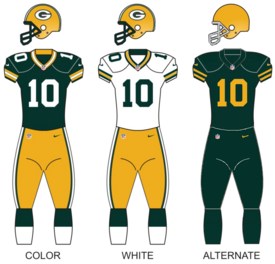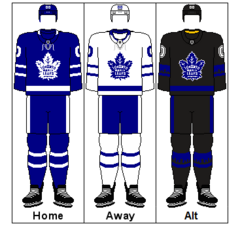Assassin’s Creed theme by Paja
Download: AssassinsCreed_9.p3t
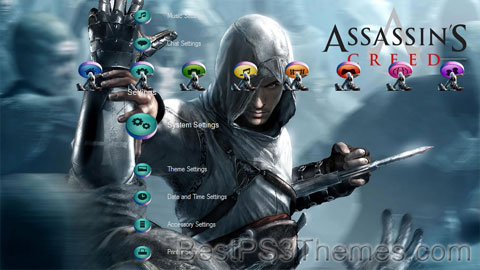
(3 backgrounds)
| Assassin's Creed | |
|---|---|
 | |
| Genre(s) | |
| Developer(s) | |
| Publisher(s) | Ubisoft |
| Creator(s) | |
| First release | Assassin's Creed November 13, 2007 |
| Latest release | Assassin's Creed Nexus VR November 16, 2023 |
Assassin's Creed is a historical action-adventure video game series and media franchise published by Ubisoft and developed mainly by its studio Ubisoft Montreal using the game engine Anvil and its more advanced derivatives. Created by Patrice Désilets, Jade Raymond, and Corey May, the Assassin's Creed video game series depicts a fictional millennia-old struggle between the Order of Assassins, who fight for peace and free will, and the Knights Templar, who desire peace through order and control. The series features historical fiction, science fiction, and fictional characters intertwined with real-world historical events and historical figures. In most games, players control a historical Assassin while also playing as an Assassin Initiate or someone caught in the Assassin–Templar conflict in the present-day framing story. Considered a spiritual successor to the Prince of Persia series, Assassin's Creed took inspiration from the novel Alamut by the Slovenian writer Vladimir Bartol, based on the historical Hashashin sect of the medieval Middle East.
The first Assassin's Creed game was released in 2007, and the series has featured thirteen main installments in total, the most recent being Assassin's Creed Mirage in 2023. Main games in the Assassin's Creed series are set in an open world and played from the third-person view. Gameplay revolves around combat, stealth, and exploration, including the use of parkour to navigate the environment. The games feature both main and side missions, and some titles also include competitive and cooperative multiplayer game modes.
A new story and occasionally new time periods are introduced in each entry, with the gameplay elements also evolving. There are three overarching story arcs in the series. The first five main games follow Desmond Miles, a descendant of several important Assassins throughout history, who uses a machine called the Animus to relive his ancestors' memories and find powerful artifacts called Pieces of Eden in an attempt to prevent a catastrophic event, referencing the 2012 phenomenon. From Assassin's Creed IV: Black Flag to Assassin's Creed Syndicate, Assassin initiates and employees of Abstergo (a company used as a front by the modern-day Templars) record genetic memories using the Helix software, helping the Templars and Assassins find new Pieces of Eden in the modern world. The next three games, Assassin's Creed Origins, Odyssey, and Valhalla, follow ex-Abstergo employee Layla Hassan on her own quest to save humanity from another disaster.
The main games in the Assassin's Creed franchise have received generally positive reviews for their ambition in visuals, game design, and narratives, with criticism for the yearly release cycle and frequent bugs, as well as the prioritising of role-playing mechanics in later titles. The series has received multiple awards and nominations, including multiple Game of the Year awards. It is commercially successful, selling over 200 million copies as of September 2022[update], becoming Ubisoft's best-selling franchise and one of the highest selling video game franchises of all time. While main titles are produced for major consoles and desktop platforms, multiple spin-off games have been released for consoles, mobiles, and handheld platforms. A series of art books, encyclopedias, comics, and novels have also been published. A live-action film adaptation of the series, titled Assassin's Creed, was released in 2016.
Development history[edit]
While the games in the series have had several narrative arcs, Ubisoft views the series as currently having three periods of development and design philosophy. Until 2015's Assassin's Creed Syndicate, the franchise was structured around single-player content, and while centering on open world spaces and several role-playing elements, were more action-adventure and stealth-oriented. Period two, covering from Assassin's Creed Origins to Assassin's Creed Mirage, brought in more role-playing elements and live-service features to increase player engagement. Period three will launch with Assassin's Creed Shadows, using lessons from the second period of development to make engrossing single-player games similar to the original titles but with features to allow players to share achievements and content with others, all to be backed by the Infinity hub system.[1]
Period one[edit]
The first Assassin's Creed game originated out of ideas for a sequel for Ubisoft's video game Prince of Persia: The Sands of Time, aiming for the seventh generation of video game consoles. The Ubisoft Montreal team decided to take the gameplay from The Sands of Time into an open-world approach, taking advantage of the improved processing power to render larger spaces and crowds. Narratively, the team wanted to move away from the Prince being someone next in line for the throne but to have to work for it; combined with research into secret societies led them to focus on the Order of Assassins, based upon the historical Hashashin sect of Ismaili, who were followers of Shia Islam, heavily borrowing from the novel Alamut.[2][3] Ubisoft developed a narrative where the player would control an Assassin escorting a non-playable Prince, leading them to call this game Prince of Persia: Assassin,[4] or Prince of Persia: Assassins.[5] Ubisoft was apprehensive to a Prince of Persia game without the Prince as the playable character, but this led the marketing division to suggest the name Assassin's Creed, playing off the creed of the Assassins, "nothing is true; everything is permitted". Ubisoft Montreal ran with this in creating a new intellectual property, eliminating the Prince, and basing it around the Assassins and the Knights Templar in the Holy Land during the 12th century. Additionally, in postulating what other assassinations they could account for throughout history, they came onto the idea of genetic memory and created the Animus device and modern storyline elements. This further allowed them to explain certain facets of gameplay, such as accounting for when the player character is killed, similar to The Sands of Time.[5]
After Assassin's Creed was released in 2007, Ubisoft Montreal said they looked to "rework the global structure" in developing the sequel, Assassin's Creed II. They felt that parkour was underutilized in the first game and designed the world in the sequel to feature freerun highways to make it easier to enter into parkour moves, for example using rooftops to escape pursuits.[6] The change in setting meant that the game would feature a new cast of characters, including a new protagonist, Ezio Auditore da Firenze. Assassin's Creed II also brought in more use of crowds to hide in plain sight that the developers had seen used in Hitman: Blood Money, adding more to the concept of social stealth as a gameplay option.[6] Finally, Ubisoft Montreal completely reworked the repetitive mission structure from the first game through numerous side activities, collectibles, and secrets. These additions became a central part of the series going forward as well as other Ubisoft games like Watch Dogs, Far Cry, and Tom Clancy's Ghost Recon.[6] Assassin's Creed II was followed by two sequels, Assassin's Creed: Brotherhood and Assassin's Creed: Revelations, which also featured Ezio as the main protagonist and introduced the ability for players to recruit NPCs as Assassins and manage them in missions.[6]
Assassin's Creed III originated from both Ubisoft Montreal, who wanted to progress the series' narrative forward in time, and to an unattached project that had been developed at Ubisoft Singapore and featured naval ship combat. As the main team had settled into the American Revolution period for the game, they found the ship-to-ship combat system fitted with the story and redesigned the setting to incorporate it further. Another major change in Assassin's Creed III was transitioning the parkour and freerun systems to work in the natural woodlands of 18th-century Massachusetts and New York. This further allowed the adding of trees and other vegetation within the city areas themselves, not just as part of the parkour systems, but to add more varied environments, which would continue as part of the series' ongoing design.[6]
For Assassin's Creed III's sequel, Assassin's Creed IV: Black Flag, the Ubisoft team built upon the foundation of its predecessor, particularly with regards to the naval gameplay, merging it seamlessly with the land-based gameplay.[6] The team also used the game as a chance to address aspects of the series' storyline. Choosing to focus on an outsider's perspective to the Assassin–Templar conflict, they set the game around the Golden Age of Piracy, with the protagonist, Edward Kenway, starting out as a pirate who initially becomes involved in the conflict with the prospect of wealth. Similarly, after the conclusion of Desmond Miles' story arc in Assassin's Creed III, the modern-day segments put players in the role of a nameless individual controlled from a first-person perspective. The team chose this approach because they believed it allowed players to more easily identify themselves in their character.[6] This trend would continue in the series until Assassin's Creed Syndicate.[6]
Development of Assassin's Creed Unity began shortly after the completion of Brotherhood in 2010,[7] with the core development team splitting off during the early stages of development on Assassin's Creed III.[8] As the first game in the series to be released exclusively for the eighth generation of video game consoles, Unity featured a graphical and gameplay overhaul. The setting chosen for the game was Paris during the early years of the French Revolution, with players taking control of a new Assassin named Arno Dorian.[7][8] After Unity, Ubisoft released Assassin's Creed Syndicate in 2015.[6]
Period two[edit]
After Syndicate, Ubisoft decided that the series needed a major reinvention across both gameplay and narrative. It was decided to make the next game, Assassin's Creed Origins, closer to a role-playing video game than a stealth-action game, which would also bring a game with many more hours of play than previous titles. Some long-standing features of the series were eliminated for this purpose, such as the social stealth mechanic. This changed how missions were presented — rather than being linearly directed through the Animus, the player character could meet various quest givers in the game's world to receive missions.[6] From the narrative side, Ubisoft placed the game before the formation of the Assassin Brotherhood in Ancient Egypt to make the player character, Bayek of Siwa, a medjay that people would respect and seek the help of.[6] The modern-day storyline also shifted back to a single character, Layla Hassan. The developers limited the number of playable sequences for her character compared to previous games but gave them more meaning, such as allowing the player to explore Layla's laptop with background information on the game's universe.[6]
Origins was followed in 2018 by Assassin's Creed Odyssey, which shifted the setting to Classical Greece and followed a similar approach to its predecessor but with more emphasis on the role-playing elements.[6] 2020's Assassin's Creed Valhalla, set in Medieval England and Norway during the Viking Age, continued the same style as Origins and Odyssey. The developers recognized feedback from the previous two games and brought back the social stealth elements, as well as the concept of a customizable home base that was first introduced in Assassin's Creed II.[6]
In 2023, Ubisoft released Assassin's Creed Mirage, a smaller title which sought to pay tribute to the franchise's earlier installments by focusing on stealth and assassinations over its predecessors' role-playing elements. The game started development as an expansion for Valhalla before being turned into a standalone release, and was set in 9th-century Baghdad during the Islamic Golden Age, a decade before the events of Valhalla, to which it served as a prequel.[9][10]
Future[edit]
In 2022, Ubisoft announced several additional games for the series. Assassin's Creed Infinity has been described by its executive producer, Marc-Alexis Côté, as a "new design philosophy" for the series,[1][11] as well as a hub that will provide the releases of future games.[12] The first two games to be included in Infinity will be Assassin's Creed Shadows, set in Japan during the Sengoku period,[9] and Assassin's Creed: Codename Hexe, rumoured to be set in Central Europe during the 16th century.[13]
Gameplay[edit]

The Assassin's Creed games are centered around one or more fictional members of the Order of the Assassins. Their memories are experienced by an in-game character in the modern-day period through a device called the Animus and its derivations. The Animus allows the user to explore these memories passed down via genetics. Within the context of the game, this provides a diegetic interface to the real-world player of the game, showing them elements like health bars, a mini-map, and target objectives as if presented by the Animus. Additionally, should the player cause the historical character to die or fail a mission, this is rectified as desynchronization of the genetic memory, allowing the player to try the mission again. Through the Animus interface, the player can retry any past mission already completed; for example, in Assassin's Creed: Brotherhood, the player achieves better synchronization results by performing the mission in a specific manner, such as by only killing the mission's target. The Animus also imparts special abilities to the modern-day character that helps them to see their target in a crowd or other unique points of interest.[14][15]
While playing as the Assassin characters, the games are generally presented from a third-person view in an open world environment, focusing on stealth and parkour. The games use a mission structure to follow the main story, assigning the player to complete an assassination of public figureheads or a covert mission. Alternatively, several side missions are available, such as mapping out the expansive cities from a high perch followed by performing a leap of faith into a haystack below, collecting treasures hidden across the cities, exploring ruins for relics, building a brotherhood of assassins to perform other tasks, or funding the rebuilding of a city through purchasing and upgrading of shops and other features. At times, the player is in direct control of the modern-day character who, by nature of the Animus use, has learned Assassin techniques through the bleeding effect, as well as their genetic ability of Eagle Vision, which separates friend, foe, and assassination targets by illuminating people in different colors.[16][17]
The games use the concept of active versus passive moves, with active moves, such as running, climbing the sides of buildings, or jumping between rooftops, more likely to alert the attention of nearby guards. When the guards become alerted, the player must either fight them or break their line of sight and locate a hiding place, such as a haystack or a well, and wait until the guards' alert is reduced. The combat system allows for a number of unique weapons, armor, and moves, including the use of a hidden blade set in a bracer on the Assassin's arm, which can be used to perform surreptitious assassinations.[18]
Storyline[edit]

Premise[edit]
The Assassin's Creed games primarily revolve around the rivalry and conflict between two ancient secret societies: the Order of Assassins, who represent freedom, and the Knights Templar, who represent order. Versions of these societies have existed for centuries, with the Assassins seeking to stop the Templars from gaining control of Pieces of Eden, artifacts that can override free will to control people.[19]
These artifacts are remnants of an ancient species pre-dating humanity called the Isu, or Precursors, which created humanity to live in peace alongside them. The Isu ensured humans could not rise against them by creating the Pieces of Eden to control them. When the first hybrid Isu-human beings emerged, named Adam and Eve, they were immune to the effects of the Pieces of Eden. They stole the Pieces of Eden, which led to a great war that ended when a massive solar flare devastated the surface of the Earth. The Isu began to die out while humanity thrived. Three Isu—Minerva, Juno, and Jupiter—attempted to prepare humanity for a solar flare they knew would come centuries later. Minerva and Jupiter prepared vaults from which humanity could activate a protective shield around Earth with the Pieces of Eden and the Eye, a means to communicate how to find and use these vaults; however, Juno saw humanity as a threat and attempted to sabotage Minerva and Jupiter's plan. Minerva and Jupiter were forced to destroy Juno, unaware she had hidden her consciousness to wake upon activation of the Eye. All that remained of the Isu were the traces of their memories in the world's mythologies, and religions, while the Pieces of Eden were lost to time.[19]
The series takes place in the modern era, in which the Templars have established the mega-corporation Abstergo Industries. Abstergo has developed a device, the Animus, whose user can relive the memories of their ancestors through their genetic material. Abstergo has kidnapped people who are descendants of past Assassins to locate the missing Pieces of Eden via the Animus.[19] A user of the Animus can move about in simulated memories as their ancestor, but performing actions outside the bounds of what their ancestor did can lead to desynchronization of the memory.[14][15] Extended use of the Animus creates a bleeding effect that gives users some of the skills and capabilities they experienced with their ancestor.[20]
Story arcs[edit]
The first five main games in the series focus on Desmond Miles, a bartender who learns he is a descendant of several important Assassins throughout history, including Altaïr Ibn-LaʼAhad from the Middle East during the Third Crusade; Ezio Auditore da Firenze from the Italian Renaissance during the late 15th and early 16th centuries; and Ratonhnhaké:ton (better known as Connor), a half-Mohawk, half-British Assassin during the American Revolution. Desmond is used by Abstergo to find Pieces of Eden but is freed by Lucy Stillman, an undercover agent for the Assassins. Lucy takes Desmond to meet Shaun Hastings and Rebecca Crane, two other members of the modern-day Assassins. The group is joined later by William Miles, Desmond's father. They continue to explore Desmond's memories and eventually discover the Eye and Minerva's warning of another possible solar flare. They also inadvertently free Juno, who then kills Lucy, revealed to be a double agent for the Templars. The group continues to find the vaults across the globe via Desmond's memories, and Desmond ultimately activates them in time to block the solar flare, at the cost of his own life.[19]
Starting with Assassin's Creed IV: Black Flag, William goes into exile, while Shaun and Rebecca continue to monitor Abstergo by posing as employees of one of their spin-off companies, Abstergo Entertainment. Abstergo has refined the Animus technology to allow anyone to experience genetic memories from the DNA material of another person, allowing Abstergo to continue their search for the Pieces of Eden under the guise of creating entertainment products. In Black Flag, the player assumes the role of an unnamed Abstergo employee tasked with scanning the memories of Edward Kenway, a privateer-turned-pirate during the Golden Age of Piracy and Connor's grandfather. During their investigation, the player is blackmailed into helping a fellow employee, John Standish, recover sensitive information and deliver it to the Assassins. John is later revealed to be a Sage, a human reincarnation of Juno's husband Aita, who is trying to resurrect her, though he is killed by Abstergo before his plan can come to fruition.[19] In Assassin's Creed Rogue, the player controls another Abstergo employee who is recruited by the Templars to clean their servers after the Assassins breach them and recover data on the life of Shay Patrick Cormac, an Assassin-turned-Templar from the 18th century. The Assassins are ultimately forced to go underground once more, and the player character is invited to join the Templars.[19]
By the time of Assassin's Creed Unity, Abstergo distributes its Animus product via a video game console named Helix, tapping into an extensive, unaware player base to help them locate more Pieces of Eden and determine the fates of various Sages as part of the Phoenix Project, an attempt to recreate the genetic structure of the Isu. The game's opening has players control an unnamed Templar during the downfall of the Templar Order, while the different "time anomalies" take them to Paris during the Belle Époque, World War II, and the Hundred Years' War. The Assassins locate select players and bring them in as Initiates to help their cause. In Unity, the player character is contacted by an Assassin named Bishop and asked to experience the memories of Arno Dorian, an Assassin active during the French Revolution, so that the modern-day Assassins can locate the body of a Sage and hide it from Abstergo.[19] Despite the Assassins' efforts, Abstergo collects enough samples of other Sages by the start of Assassin's Creed Syndicate to move forward with the Phoenix Project. Again, Bishop contacts the Initiate and asks them to explore the memories of Jacob and Evie Frye, twin Assassins from Victorian England, to locate a Piece of Eden known as the Shroud, which Abstergo needs to complete the process of recreating the Isu genetic structure. Although the Initiate manages to locate the Shroud, the Templars beat the Assassins to it.[19]
A new storyline is introduced in Assassin's Creed Origins focusing on Abstergo researcher Layla Hassan. Initially tasked with locating historical artifacts in Egypt, Layla stumbles upon the mummified corpses of the medjay Bayek and his wife Aya, co-founders of the Hidden Ones, the precursor organizati
Scuderia
Scuderia theme by Paja
Download: Scuderia.p3t
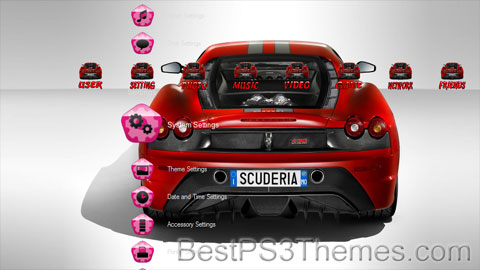
(3 backgrounds)
Scuderia means stable (noun) in the Italian language. It has entered English usage mainly through professional auto racing, in which many Italian teams incorporate the term in their names.
"Scuderia" may refer to:
- Scuderia Ferrari, a current Italian Formula One team
- Any of a number of other racing teams:
- Scuderia AlphaTauri
- Scuderia Ambrosiana
- Scuderia Bizzarrini
- Scuderia Centro Sud
- Scuderia Coloni
- Scuderia Colonia
- Scuderia Corsa
- Scuderia Enrico Plate
- Scuderia Famà
- Scuderia Filipinetti
- Scuderia Finotto
- Scuderia Italia
- Scuderia Lavaggi
- Scuderia Milano
- Scuderia Playteam
- Scuderia Serenissima
- Scuderia Toro Rosso
- Scuderia Vittoria
- Scuderia Volpini
- A version of the Ferrari F430
- Scuderia, a streamliner dragster
- Scuderia Cameron Glickenhaus SCG 003, an American sportscar
See also[edit]
Dark Bliss
Dark Bliss theme by Paja
Download: DarkBliss.p3t
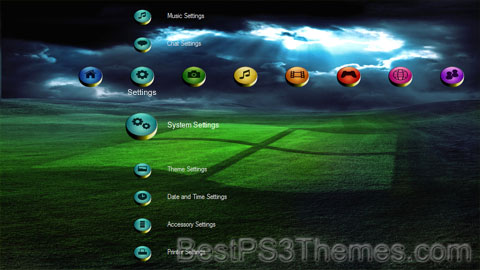
(1 background)
P3T Unpacker v0.12
Copyright (c) 2007. Anoop Menon
This program unpacks Playstation 3 Theme files (.p3t) so that you can touch-up an existing theme to your likings or use a certain wallpaper from it (as many themes have multiple). But remember, if you use content from another theme and release it, be sure to give credit!
Download for Windows: p3textractor.zip
Instructions:
Download p3textractor.zip from above. Extract the files to a folder with a program such as WinZip or WinRAR. Now there are multiple ways to extract the theme.
The first way is to simply open the p3t file with p3textractor.exe. If you don’t know how to do this, right click the p3t file and select Open With. Alternatively, open the p3t file and it will ask you to select a program to open with. Click Browse and find p3textractor.exe from where you previously extracted it to. It will open CMD and extract the theme to extracted.[filename]. After that, all you need to do for any future p3t files is open them and it will extract.
The second way is very simple. Just drag the p3t file to p3textractor.exe. It will open CMD and extract the theme to extracted.[filename].
For the third way, first put the p3t file you want to extract into the same folder as p3textractor.exe. Open CMD and browse to the folder with p3extractor.exe. Enter the following:
p3textractor filename.p3t [destination path]Replace filename with the name of the p3t file, and replace [destination path] with the name of the folder you want the files to be extracted to. A destination path is not required. By default it will extract to extracted.filename.
500
500 theme by Paja
Download: 500.p3t
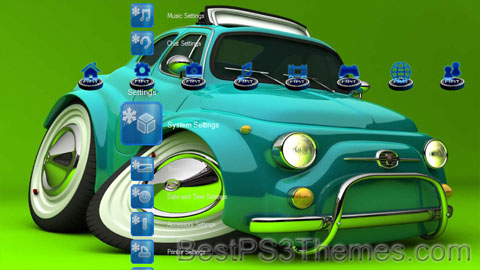
(1 background)
500 may refer to:
Buildings and places[edit]
- 500 Boylston Street in Boston
- 500 Brickell in Miami
- 500 Capitol Mall in Sacramento
- 500 Fifth Avenue
- 500 Renaissance Center, one of seven buildings in the GM Renaissance Center in Detroit, Michigan
- Tin Wing stop, Hong Kong (station code)
Currency[edit]
- 500 kroner note, a 1972 Danish banknote
- 500 kroner note, a 1997 Danish banknote
- 500 Krooni, an Estonian banknote
- 500 kronur note, an Icelandic banknote
- 500 kroner note, a Norwegian banknote
- 500 kronor note, a Swedish banknote
- 500 yen coin, a Japanese coin
- 500 euro note, a Euro banknote
Electronics[edit]
- Amiga 500, a home computer
- Amiga 500 Plus, a home computer
- Lenovo IdeaPad 500, a discontinued brand of notebook computers, same as Lenovo's IdeaPad 300
- Lenovo Yoga 500, a 2-in-1 PC
- Model 500 telephone
Games[edit]
Ball games[edit]
- 500 (ball game), a ball game for children
Card games[edit]
- 500 (card game) based on Euchre
- 500 Rum, a variant of the rummy card game
Video games[edit]
- 500cc Grand Prix, a computer came on Atari ST
- Indy 500 (arcade game)
- Indy 500 (1995 video game)
Lists[edit]
- Deloitte Fast 500
- Forbes 500
- Fortune 500
- Fortune Global 500
- S&P 500
- NME's The 500 Greatest Albums of All Time
- Rolling Stone's 500 Greatest Albums of All Time
- The 500 Greatest Songs of All Time, by Rolling Stone magazine
- The Rock and Roll Hall of Fame's 500 Songs that Shaped Rock and Roll
Media[edit]
- 500 Days of Summer
- 500mg, a solo project of Michael Gibbons of the band Bardo Pond
- 500 (Shake Baby Shake), a song by Lush from their album Lovelife
Military[edit]
- 500 Brigade, the Israeli Armor Corps
- 500th Air Refueling Wing
- 500th SS Parachute Battalion
Roads and routes[edit]
- List of 500-series county routes in New Jersey
- 500 series bus routes, Sydney
- Bundesstraße 500
- Florida State Road 500
Sports[edit]
Baseball[edit]
Cycling[edit]
- 500 meter track time trial
Motorsports[edit]
- 500cc, a subdivision of the MotoGP class in Grand Prix motorcycle racing
- 500 km Zeltweg, an Austrian racing event
- Adelaide 500
- Atlanta 500
- Daytona 500
- Food City 500
- Indy 500
- Los Angeles Times 500
- Monza 500 (Race of Two Worlds)
- Phillip Island 500
- Queensland 500
- Sandown 500
- Wellington 500
Vehicles[edit]
Aircraft[edit]
- Cessna 500, an eight-seat business jet
- Eclipse 500, a small six-seat business jet
Automobiles[edit]
- Denza 500, a German-Chinese compact electric hatchback
- Fiat 500, an lineup of Italian small cars
- Fiat 500 Topolino (1936–1955)
- Fiat 500 (1957–1975)
- Fiat Cinquecento (1991–1998)
- Fiat 500 (2007) (2007–2020)
- Fiat New 500 (2020–present)
- Ford Five Hundred, an American full-size sedan
- Lexus LC 500, a Japanese sports coupe
- Lexus LC 500 GT500, a racing variant of the LC 500
- Mercedes-Benz 500, a series of German luxury cars
Trains[edit]
- 500 Series Shinkansen, a series of railroad trains operated by West Japan Railway Company
Weapons[edit]
Guns[edit]
- Mossberg 500, a shotgun
- Smith & Wesson Model 500, a revolver
- Ultimate 500, a revolver
Gun cartridges[edit]
- .500 Black Powder Express (rifle)
- .500 Bushwhacker (revolver)
- .500 S&W Magnum (revolver)
- .500 Linebaugh (revolver)
- .500 Maximum (revolver)
- .500 Nitro Express (rifle)
- .500 S&W Special (revolver)
- .500 Wyoming Express (revolver)
Other[edit]
- 500 Internal Server Error, an HTTP response code
- 500 kHz (or 500 kc), a radio frequency
- 500 year flood, a type of flood level
- International calling code for the Falkland Islands
- The 500 (I Cinquecento), the 500 Italian soldiers killed at the Battle of Dogali, 1887
See also[edit]
Saturn
Saturn theme by Paja
Download: Saturn.p3t
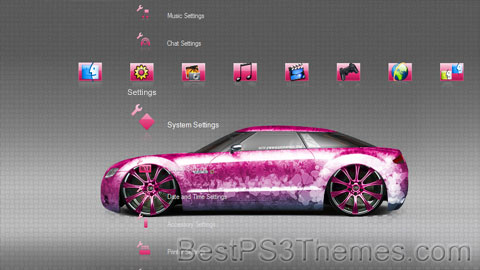
(1 background)
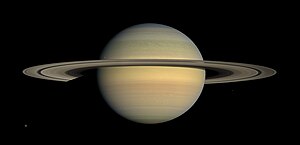 | |||||||||||||
| Designations | |||||||||||||
|---|---|---|---|---|---|---|---|---|---|---|---|---|---|
| Pronunciation | /ˈsætərn/ [1] | ||||||||||||
Named after | Saturn | ||||||||||||
| Adjectives | Saturnian /səˈtɜːrniən/,[2] Cronian[3] / Kronian[4] /ˈkroʊniən/[5] | ||||||||||||
| Symbol | |||||||||||||
| Orbital characteristics[6] | |||||||||||||
| Epoch J2000.0 | |||||||||||||
| Aphelion | 1,514.50 million km (10.1238 AU) | ||||||||||||
| Perihelion | 1,352.55 million km (9.0412 AU) | ||||||||||||
| 1,433.53 million km (9.5826 AU) | |||||||||||||
| Eccentricity | 0.0565 | ||||||||||||
| |||||||||||||
| 378.09 days | |||||||||||||
Average orbital speed | 9.68 km/s (6.01 mi/s) | ||||||||||||
| 317.020°[8] | |||||||||||||
| Inclination | |||||||||||||
| 113.665° | |||||||||||||
| 2032-Nov-29[10] | |||||||||||||
| 339.392°[8] | |||||||||||||
| Known satellites | 146 with formal designations; innumerable additional moonlets.[11][12] | ||||||||||||
| Physical characteristics[6] | |||||||||||||
Mean radius | 58,232 km (36,184 mi)[b]
9.1402 Earths | ||||||||||||
Equatorial radius |
| ||||||||||||
Polar radius |
| ||||||||||||
| Flattening | 0.09796 | ||||||||||||
| Circumference | 365882.4 km (227348.8 mi) (equatorial)[13] | ||||||||||||
| Volume |
| ||||||||||||
| Mass |
| ||||||||||||
Mean density | 0.687 g/cm3 (0.0248 lb/cu in)[c] 0.1246 Earths | ||||||||||||
| 0.22[15] | |||||||||||||
| 35.5 km/s (22.1 mi/s)[b] | |||||||||||||
| 10 h 32 m 36 s; 10.5433 hours,[16] 10 h 39 m; 10.7 hours[7] | |||||||||||||
| 10h 33m 38s + 1m 52s − 1m 19s [17][18] | |||||||||||||
Equatorial rotation velocity | 9.87 km/s (6.13 mi/s; 35,500 km/h)[b] | ||||||||||||
| 26.73° (to orbit) | |||||||||||||
North pole right ascension | 40.589°; 2h 42m 21s | ||||||||||||
North pole declination | 83.537° | ||||||||||||
| Albedo | |||||||||||||
| |||||||||||||
| −0.55[23] to +1.17[23] | |||||||||||||
| −9.7[24] | |||||||||||||
| 14.5″ to 20.1″ (excludes rings) | |||||||||||||
| Atmosphere[6] | |||||||||||||
Surface pressure | 140 kPa[25] | ||||||||||||
| 59.5 km (37.0 mi) | |||||||||||||
| Composition by volume | |||||||||||||
Saturn is the sixth planet from the Sun and the second-largest in the Solar System, after Jupiter. It is a gas giant with an average radius of about nine-and-a-half times that of Earth.[26][27] It has only one-eighth the average density of Earth, but is over 95 times more massive.[28][29][30] Even though Saturn is nearly the size of Jupiter, Saturn has less than one-third of Jupiter's mass. Saturn orbits the Sun at a distance of 9.59 AU (1,434 million km) with an orbital period of 29.45 years.
Saturn's interior is thought to be composed of a rocky core, surrounded by a deep layer of metallic hydrogen, an intermediate layer of liquid hydrogen and liquid helium, and finally, a gaseous outer layer. Saturn has a pale yellow hue due to ammonia crystals in its upper atmosphere. An electrical current within the metallic hydrogen layer is thought to give rise to Saturn's planetary magnetic field, which is weaker than Earth's, but which has a magnetic moment 580 times that of Earth due to Saturn's larger size. Saturn's magnetic field strength is around one-twentieth of Jupiter's.[31] The outer atmosphere is generally bland and lacking in contrast, although long-lived features can appear. Wind speeds on Saturn can reach 1,800 kilometres per hour (1,100 miles per hour).
The planet has a bright and extensive ring system composed mainly of ice particles, with a smaller amount of rocky debris and dust. At least 146 moons[32] are known to orbit the planet, of which 63 are officially named; this does not include the hundreds of moonlets in its rings. Titan, Saturn's largest moon and the second largest in the Solar System, is larger (while less massive) than the planet Mercury and is the only moon in the Solar System to have a substantial atmosphere.[33]
Name and symbol[edit]
Saturn is named after the Roman god of wealth and agriculture and father of Jupiter. Its astronomical symbol (![]() ) has been traced back to the Greek Oxyrhynchus Papyri, where it can be seen to be a Greek kappa-rho ligature with a horizontal stroke, as an abbreviation for Κρονος (Cronus), the Greek name for the planet (
) has been traced back to the Greek Oxyrhynchus Papyri, where it can be seen to be a Greek kappa-rho ligature with a horizontal stroke, as an abbreviation for Κρονος (Cronus), the Greek name for the planet (![]() ).[34] It later came to look like a lower-case Greek eta, with the cross added at the top in the 16th century to Christianize this pagan symbol.
).[34] It later came to look like a lower-case Greek eta, with the cross added at the top in the 16th century to Christianize this pagan symbol.
The Romans named the seventh day of the week Saturday, Sāturni diēs ("Saturn's Day"), for the planet Saturn.[35]
Physical characteristics[edit]
Saturn is a gas giant composed predominantly of hydrogen and helium. It lacks a definite surface, though it is likely to have a solid core.[36] Saturn's rotation causes it to have the shape of an oblate spheroid; that is, it is flattened at the poles and bulges at its equator. Its equatorial radius is more than 10% larger than its polar radius: 60,268 km versus 54,364 km (37,449 mi versus 33,780 mi).[6] Jupiter, Uranus, and Neptune, the other giant planets in the Solar System, are also oblate but to a lesser extent. The combination of the bulge and rotation rate means that the effective surface gravity along the equator, 8.96 m/s2, is 74% of what it is at the poles and is lower than the surface gravity of Earth. However, the equatorial escape velocity of nearly 36 km/s is much higher than that of Earth.[37]
Saturn is the only planet of the Solar System that is less dense than water—about 30% less.[38] Although Saturn's core is considerably denser than water, the average specific density of the planet is 0.69 g/cm3 due to the atmosphere. Jupiter has 318 times Earth's mass,[39] and Saturn is 95 times Earth's mass.[6] Together, Jupiter and Saturn hold 92% of the total planetary mass in the Solar System.[40]
Internal structure[edit]

Despite consisting mostly of hydrogen and helium, most of Saturn's mass is not in the gas phase, because hydrogen becomes a non-ideal liquid when the density is above 0.01 g/cm3, which is reached at a radius containing 99.9% of Saturn's mass. The temperature, pressure, and density inside Saturn all rise steadily toward the core, which causes hydrogen to be a metal in the deeper layers.[40]
Standard planetary models suggest that the interior of Saturn is similar to that of Jupiter, having a small rocky core surrounded by hydrogen and helium, with trace amounts of various volatiles.[41] Analysis of the distortion shows that Saturn is substantially more centrally condensed than Jupiter and therefore contains a significantly larger amount of material denser than hydrogen near its centre. Saturn's central regions contain about 50% hydrogen by mass, while Jupiter's contain approximately 67% hydrogen.[42]
This core is similar in composition to Earth, but is more dense. The examination of Saturn's gravitational moment, in combination with physical models of the interior, has allowed constraints to be placed on the mass of Saturn's core. In 2004, scientists estimated that the core must be 9–22 times the mass of Earth,[43][44] which corresponds to a diameter of about 25,000 km (16,000 mi).[45] However, measurements of Saturn's rings suggest a much more diffuse core with a mass equal to about 17 Earths and a radius equal to around 60% of Saturn's entire radius.[46] This is surrounded by a thicker liquid metallic hydrogen layer, followed by a liquid layer of helium-saturated molecular hydrogen that gradually transitions to a gas with increasing altitude. The outermost layer spans about 1,000 km (620 mi) and consists of gas.[47][48][49]
Saturn has a hot interior, reaching 11,700 °C (21,100 °F) at its core, and radiates 2.5 times more energy into space than it receives from the Sun. Jupiter's thermal energy is generated by the Kelvin–Helmholtz mechanism of slow gravitational compression, but such a process alone may not be sufficient to explain heat production for Saturn, because it is less massive. An alternative or additional mechanism may be the generation of heat through the "raining out" of droplets of helium deep in Saturn's interior. As the droplets descend through the lower-density hydrogen, the process releases heat by friction and leaves Saturn's outer layers depleted of helium.[50][51] These descending droplets may have accumulated into a helium shell surrounding the core.[41] Rainfalls of diamonds have been suggested to occur within Saturn, as well as in Jupiter[52] and ice giants Uranus and Neptune.[53]
Atmosphere[edit]
The outer atmosphere of Saturn contains 96.3% molecular hydrogen and 3.25% helium by volume.[54] The proportion of helium is significantly deficient compared to the abundance of this element in the Sun.[41] The quantity of elements heavier than helium (metallicity) is not known precisely, but the proportions are assumed to match the primordial abundances from the formation of the Solar System. The total mass of these heavier elements is estimated to be 19–31 times the mass of Earth, with a significant fraction located in Saturn's core region.[55]
Trace amounts of ammonia, acetylene, ethane, propane, phosphine, and methane have been detected in Saturn's atmosphere.[56][57][58] The upper clouds are composed of ammonia crystals, while the lower level clouds appear to consist of either ammonium hydrosulfide (NH4SH) or water.[59] Ultraviolet radiation from the Sun causes methane photolysis in the upper atmosphere, leading to a series of hydrocarbon chemical reactions with the resulting products being carried downward by eddies and diffusion. This photochemical cycle is modulated by Saturn's annual seasonal cycle.[58] Cassini observed a series of cloud features found in northern latitudes, nicknamed the "String of Pearls". These features are cloud clearings that reside in deeper cloud layers.[60]
Cloud layers[edit]
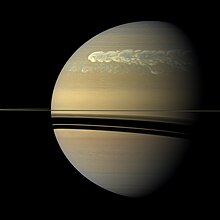
Saturn's atmosphere exhibits a banded pattern similar to Jupiter's, but Saturn's bands are much fainter and are much wider near the equator. The nomenclature used to describe these bands is the same as on Jupiter. Saturn's finer cloud patterns were not observed until the flybys of the Voyager spacecraft during the 1980s. Since then, Earth-based telescopy has improved to the point where regular observations can be made.[61]
The composition of the clouds varies with depth and increasing pressure. In the upper cloud layers, with temperatures in the range of 100–160 K and pressures extending between 0.5–2 bar, the clouds consist of ammonia ice. Water ice clouds begin at a level where the pressure is about 2.5 bar and extend down to 9.5 bar, where temperatures range from 185 to 270 K. Intermixed in this layer is a band of ammonium hydrosulfide ice, lying in the pressure range 3–6 bar with temperatures of 190–235 K. Finally, the lower layers, where pressures are between 10 and 20 bar and temperatures are 270–330 K, contains a region of water droplets with ammonia in aqueous solution.[62]
Saturn's usually bland atmosphere occasionally exhibits long-lived ovals and other features common on Jupiter. In 1990, the Hubble Space Telescope imaged an enormous white cloud near Saturn's equator that was not present during the Voyager encounters, and in 1994 another smaller storm was observed. The 1990 storm was an example of a Great White Spot, a short-lived phenomenon that occurs once every Saturnian year, roughly every 30 Earth years, around the time of the northern hemisphere's summer solstice.[63] Previous Great White Spots were observed in 1876, 1903, 1933, and 1960, with the 1933 storm being the best observed.[64] The latest giant storm was observed in 2010. In 2015, researchers used Very Large Array telescope to study Saturnian atmosphere, and reported that they found "long-lasting signatures of all mid-latitude giant storms, a mixture of equatorial storms up to hundreds of years old, and potentially an unreported older storm at 70°N".[65]
The winds on Saturn are the second fastest among the Solar System's planets, after Neptune's. Voyager data indicate peak easterly winds of 500 m/s (1,800 km/h).
Elegance
Elegance theme by Paja
Download: Elegance.p3t
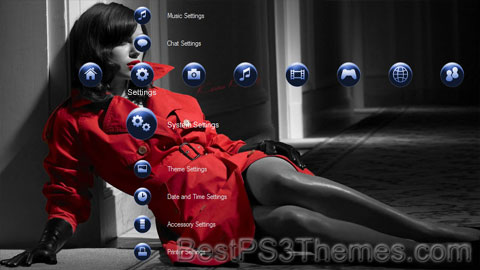
(1 background)
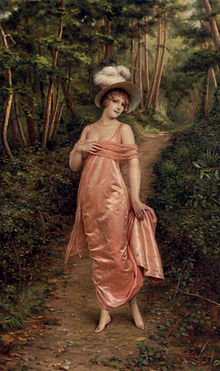
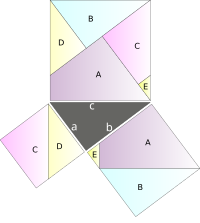
Elegance is beauty that shows unusual effectiveness and simplicity.
Elegance is frequently used as a standard of tastefulness, particularly in visual design, decorative arts, literature, science, and the aesthetics of mathematics.
Elegant things often exhibit refined grace and suggest maturity, and in the case of mathematics, a deep mastery of the subject matter.[1]
General concept[edit]
Essential components of the concept include simplicity and consistency of design, focusing on the essential features of an object. In art of any kind one might also require dignified grace, or restrained beauty of style.
Visual stimuli are frequently considered elegant, if a small number of colors and stimuli are used, emphasizing the remainder.[2]
In philosophy of science[edit]
In the philosophy of science, there are two concepts referring to two aspects of simplicity: elegance (syntactic simplicity), which means the number and complexity of hypotheses, and parsimony (ontological simplicity), which is the number and complexity of things postulated.[3]
In mathematics[edit]
In mathematical problem solving, the solution to a problem (such as a proof of a mathematical theorem) exhibits mathematical elegance if it is surprisingly simple and insightful yet effective and constructive. Such solutions might involve a minimal amount of assumptions and computations, while outlining an approach that is highly generalizable. Similarly, a computer program or algorithm is elegant if it uses a small amount of code to great effect.[4][5]
In engineering[edit]
In engineering, a solution may be considered elegant if it uses a non-obvious method to produce a solution which is highly effective and simple. An elegant solution may solve multiple problems at once, especially problems that are not thought to be inter-related.[6] Elegance can arguably be measured for engineering problems as the ratio of problem complexity to that of solution complexity.[7] Thus a simple (low complexity) solution to a problem of high complexity is seen as elegant. This measure does not advise of process to produce elegant solutions, and is merely a way of comparing between multiple solutions for elegance assessment.
In chemistry[edit]
In chemistry, chemists might look for elegance in theory, method, technique and procedure. For example, elegance might comprise creative parsimony and versatility in the utilization of resources, in the manipulation of materials, and in the effectiveness in syntheses and analysis.
In pharmacy[edit]
In pharmacy, elegance in formulation is important for quality as well as for effectiveness in dosage form design, a major component of pharmaceuticals.
In fashion[edit]
The concept of elegance in fashion is often associated with the modern taste for subtraction and understatement that capitalistic societies have developed to convey a sense of status. Unlike similar concepts such as glamour, elegance is a unisex practice, and it was initially developed amongst the male ruling classes after the French Revolution. Elegance was later adopted by ladieswear, from the 20th century onwards. This approach to clothes based on subtraction and understatement is pursued by the upper classes to avoid vulgarity, hence belonging to a lower social status. Several elements that determine the adoption of elegance and its rule have been recognized: a key role is played by class, gender, morality and taste.[8]
References[edit]
- ^ "Definition of ELEGANCE". www.merriam-webster.com. Retrieved 2019-11-20.
- ^ Walden, Stephanie. "The Elements of Elegance: What Makes Design 'Sophisticated'?". Mashable. Retrieved 2019-11-20.
- ^ Stanford Encyclopedia of Philosophy entry
- ^ Perrin, Chad (16 August 2006). "ITLOG Import: Elegance". Chad Perrin: SOB. Archived from the original on 30 July 2020. Retrieved 9 June 2008.
- ^ Spolsky, Joel (15 December 2006). "Elegance". Joel on Software.
- ^ Zeldes, Nathan (2007). "Ingenious simplicity". Nathan's Possibly Interesting Web Site. Retrieved 11 October 2011.
- ^ Efatmaneshnik, Mahmoud; Ryan, Mike (2019), "On the Definitions of Sufficiency and Elegance in Systems Design", IEEE Systems Journal, 13 (3): 2077–2088, doi:10.1109/JSYST.2018.2875152, S2CID 69432051
- ^ d'Aura, G., 2021. The Silence of Garments: Modernity and the conquest of elegance. Aisthema, International Journal, 8(1), pp.77-99. http://www.aisthema.eu/ojs/index.php/aisthema/article/view/80/86
Further reading[edit]
- Schiro, Anne-Marie (30 August 1988). "For Galanos, Elegance Is Eternal". The New York Times.
LittleBigPlanet #9
LittleBigPlanet theme by SeoulSpirit aka Tyler Fortier/Seoul_Teamwork
Download: LittleBigPlanet_9.p3t
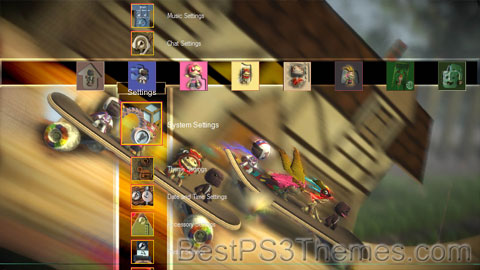
(1 background)
| LittleBigPlanet | |
|---|---|
 | |
| Genre(s) | Platform, endless running |
| Developer(s) | Media Molecule (2008-2014) SCE Studio Cambridge (2009) Supermassive Games (2010) XDev (2010-2012) Double Eleven (2012) Tarsier Studios (2012) United Front Games (2012) San Diego Studio (2012) Firesprite (2014) Sumo Digital (2014-2020) Exient Entertainment (2023) |
| Publisher(s) | Sony Interactive Entertainment PlayStation Mobile (2014) |
| Platform(s) | PlayStation 3 PlayStation Portable PlayStation Vita PlayStation 4 PlayStation 5 Windows |
| First release | LittleBigPlanet 27 October 2008 |
| Latest release | Ultimate Sackboy March 3, 2023 |
LittleBigPlanet (LBP - stylised as LittleBIGPlanet) is a puzzle platform video game series created and produced by British developer Media Molecule and published by Sony Interactive Entertainment. Most games in the series put a strong emphasis on user-generated content and are based on the series' tagline "Play, Create, Share". The tagline represents the three core elements of the series: playing alone or with others locally (on the same console) or online, creating new content using the in-game creation tools, and sharing creations and discoveries online with other players.
Tarsier Studios, Fireproof Games and Supermassive Games also contribute to the development of the PlayStation 3 games, creating in-game assets (downloadable content) including costumes, backgrounds, objects, and stickers. Some of these assets will also provide the player more tools and gadgets to use in the level editor.[1]
The series comprises six games across five gaming platforms. The series was launched in 2008 with the PlayStation 3 game LittleBigPlanet, which was followed in 2009 by a PlayStation Portable version of the same name, initially developed by Studio Liverpool[2] and later handed to SCE Studio Cambridge. The sequel to the PlayStation 3 version, LittleBigPlanet 2, was released in January 2011 alongside a smaller spin-off title called Sackboy's Prehistoric Moves. LittleBigPlanet PS Vita was developed by Tarsier Studios and Double Eleven, released in September 2012 for the PlayStation Vita. At E3 2014, Sony announced LittleBigPlanet 3, a PlayStation 4 instalment that was developed by Sumo Digital and released in November 2014.[3] The games are all published by Sony Computer Entertainment. The latest instalment for the LittleBigPlanet franchise titled Sackboy: A Big Adventure was revealed during the PS5 live event and released on the PlayStation 4 and PlayStation 5 in November 2020. A Windows version was released on 27 October 2022.[4]
On 17 January 2015, it was announced that all LittleBigPlanet servers in Japan would shut down on 31 July, along with the PlayStation Portable version and LittleBigPlanet Karting in late August in all regions. Due to attacks on the online servers, all LittleBigPlanet servers were taken down in May 2021 (the Vita version had remained closed since March).[5] The servers for the PS4 version of LittleBigPlanet 3 were brought back up on 13 September 2021, however, in the same announcement, it mentioned that the servers for LittleBigPlanet, LittleBigPlanet 2, LittleBigPlanet PS Vita and the PS3 version of LittleBigPlanet 3 will remain closed permanently.[6] On 8 January, 2024, it was announced that, presumably due to more attacks on the online servers, the servers for the PS4 version of LittleBigPlanet 3 were being temporarily closed while they investigate them.[7][8][9]
On 19 April 2024, the servers for the PlayStation 4 version of LittleBigPlanet 3 were permanently shut down due to ongoing technical issues.[10]
Gameplay[edit]
The core mechanics of the series revolve around its tagline, "Play, Create, Share".[11]
Play[edit]
In the first two instalments of the series, gameplay consist primarily of traditional two-dimensional look in a three-dimensional style platforming like jumping and avoiding obstacles to successfully navigate to the end of a level to win.[12] Since LittleBigPlanet 2, the series has included mini-games, including ones that do not follow the platformer genre. Most LittleBigPlanet games involve a player playing solo or co-operatively with friends to navigate through a level whilst collecting various "bubbles" along the way, which can take the form of either points or collectibles. In-game collectibles can be used in level creation or to customize Sackboy, the player character. There are also numerous co-operative parts of levels whereby certain prize bubbles can be earned. In LittleBigPlanet 3 and Sackboy: A Big Adventure, Collectables are also present, being used in various shops to purchase more costumes.
Create[edit]
The Create component primarily refers to level creation in the game, along with other features like character customisation. Players can create their own levels with the built-in level creator. Many items that are collected while playing through the story mode and from LittleBigPlanet's community can be used to help with level creation.[13] These levels can remain as the original LittleBigPlanet platforming gameplay, or they can include other game types, such as racing, fighting, shooting and sports.[12] The player can also make non-gaming creations such as music and films (commonly known in-game as cut-scenes).[14] In LittleBigPlanet 2, Sackbots were introduced to give players more control over non-player characters in their levels as well as make the levels in their entirety more intelligent. The creation technique introduced on the game gave the possibility for logic, and it gave the ability to build sets of machines and complex contraptions.[14]
[edit]
Lastly, the Share component relates to sharing creations with the game's community by uploading levels to the PlayStation Network. To-date there were an excess of ten million user-created levels available to play on the LittleBigPlanet server in the PlayStation 3 games.[15] After the release of LittleBigPlanet 2 and the LBP.me community website, the Share component also had a strong emphasis sharing discoveries. Players were encouraged to share levels they found with other players by writing reviews and comments in-game and by sharing links to creations' LBP.me pages via social networks.
Overview[edit]
The series takes place in a world known as LittleBigPlanet. Each curator is in charge of a part of LittleBigPlanet and they govern them independently. LittleBigPlanet has geography inspired by the real-life Earth. All games in the series follow the main protagonist Sackboy, a small anthropomorphic creature made of brown fabric with a zip fastener and button eyes. He can be customized to the player's liking using costumes that are either unlocked in the game or bought as downloadable content from the PlayStation Store. The player can control Sackboy's four emotions; happiness, sadness, worry and anger, each of which has three levels of intensity. The English language version of each game is narrated by Stephen Fry and in all formats Fry's scripts are written by Dean Wilkinson.
Games[edit]
| 2008 | LittleBigPlanet |
|---|---|
| 2009 | LittleBigPlanet (PSP) |
| 2010 | Sackboy's Prehistoric Moves |
| 2011 | LittleBigPlanet 2 |
| 2012 | LittleBigPlanet PS Vita |
| LittleBigPlanet Karting | |
| 2013 | |
| 2014 | Run Sackboy! Run! |
| LittleBigPlanet 3 | |
| 2015 | |
| 2016 | |
| 2017 | |
| 2018 | |
| 2019 | |
| 2020 | Sackboy: A Big Adventure |
| 2021 | |
| 2022 | |
| 2023 | Ultimate Sackboy |
Main series[edit]
LittleBigPlanet[edit]
The first game in the series was released on the PlayStation 3 platform in 2008 and was the first title developed by Media Molecule, under the name The Next Big Thing. The player controls Sackboy as he travels around the titular LittleBigPlanet, helping the eight creator curators of LittleBigPlanet with their problems in their own respective realms. Throughout the story, Sackboy tries to stop The Collector, one of the eight creator curators who has gone rogue, kidnapping the creations of LittleBigPlanet.[16] The game received widespread acclaim for its design, gameplay, and customization afforded to the player, particularly the built-in level editor. After its release, it received numerous industry awards.[17]
LittleBigPlanet 2[edit]
The second game in the series is a direct sequel to the first LittleBigPlanet and was developed by Media Molecule for the PlayStation 3 for a release in 2011. The sequel saw a major shift in the direction of the series, going from a primarily traditional platform game in the first two entries to a more varied style of gameplay called a "platform for games". The second game gave players a wider variety of options when it came to level design, which saw the creation of levels other than platforming such as racing, puzzles, and fighting games.[18] Following the events of the first two entries in the series, the game takes place when an antagonist known as the Negativitron invades LittleBigPlanet and begins to suck up all its inhabitants. Sackboy must team up with a secret organization known as "The Alliance", led by Larry Da Vinci, to save LittleBigPlanet from the Negativitron.[19] The game also supported the PlayStation Move, with an update post-launch.
LittleBigPlanet 3[edit]
LittleBigPlanet 3 is a game for the PlayStation 3[20][21][22] and PlayStation 4. Announced at E3 2014, it was developed by Sumo Digital and was released in November 2014. In the game, Sackboy is transported to another world, Bunkum, where he has to awaken its three missing heroes, OddSock, Toggle and Swoop, who are new playable characters. Sackboy travels through different worlds in order to free the 3 new characters and stop Newton.[23]
Handheld[edit]
LittleBigPlanet (PlayStation Portable)[edit]
A portable entry of the series was developed primarily by SCE Studio Cambridge in association with Media Molecule for the PlayStation Portable. The game, released in 2009, shared the same name as the original game; however, it was not a port of the PlayStation 3 game, but rather a new entry in the series. It has a story-mode with levels and features many of the same mechanics of its PlayStation 3 counterpart, such as customizations, albeit without the multiplayer component of the game. The game takes place after the events of the PlayStation 3 version of LittleBigPlanet, in which The Collector has been defeated. A carnival is being held and Sackboy decides to go around the world to invite the eight curators of LittleBigPlanet to the carnival whilst finding materials for his own carnival float.[24]
LittleBigPlanet PS Vita[edit]
The fourth game in the series was developed by Tarsier Studios, Double Eleven, and XDev for the PlayStation Vita handheld and had a 2012 release.[25] The game features the same core mechanics from LittleBigPlanet 2, with the focus being on a "platform for games" rather than a platformer like previous entries in the series before LittleBigPlanet 2. The game utilizes the unique controls of the PlayStation Vita by using its multi-touch touchscreen and its rear touchpad to navigate through various obstacles in stages as well as for level creation by users.[26] The game supports cross-buy of DLC costume packs between LittleBigPlanet 2, as well as LittleBigPlanet Karting.
Spinoff games[edit]
LittleBigPlanet Karting[edit]
LittleBigPlanet Karting is a kart racing game developed by United Front and San Diego Studio in conjunction with series creator Media Molecule for the PlayStation 3.[27] In its story mode, the player ventures through worlds including: LittleBigPlanet, Monster Islands, Victoria's Laboratory, The Progress Emporium, Eve's Asylum, The Space Bass, and Hoard, Sweet Hoard, to put an end to the Hoard racers, who snatch many pieces of the different planets to stash them in the Garage at the End of the Universe. Sony Entertainment America shut down the North American LittleBigPlanet Karting online servers on 31 August 2016.[28]
Sackboy's Prehistoric Moves[edit]
The game was developed by XDev as a spin-off from the LittleBigPlanet series utilizing the PlayStation Move on the PlayStation 3. It was released in December 2010, as a downloadable title from the PlayStation Store and was later bundled with LittleBigPlanet 2. The game was described as a "demo" and featured 10 prehistoric inspired story levels. In the game, Sackboy must save Little Big Planet from the T-Rex. Unlike the main games, which can be played as a single-player experience, the game required a minimum of two players to work.[29] This was due to the main mechanics of the spin-off whereby one player would control Sackboy traditionally using the gamepad for platforming while a second player had to use a PlayStation Move similar to a pointer to move obstacles and objects out of the way in order to successfully navigate a level.[30]
Run Sackboy! Run![edit]
Run Sackboy! Run! is a free-to-play endless running game developed by Firesprite and published by PlayStation Mobile that was released on iOS on 30 October 2014,[31] Android on 17 December 2014[32] and PlayStation Vita on 31 March 2015.[33] The game has no real plot, except for Sackboy running through Craftworld from the Negativitron. The game awarded players with exclusive costumes for LittleBigPlanet 3 (which was released at a similar time) by reaching point goals and collecting stickers.[34]
LittleBigPlanet Hub[edit]
LittleBigPlanet Hub is an unreleased free-to-play game for the PlayStation 3.[35] It was planned to be a downloadable title from the PlayStation Store which would have allowed players to create levels and play a curated selection of community levels from LittleBigPlanet and LittleBigPlanet 2 as well as 16 levels from the games' story modes. LittleBigPlanet Hub would also have contained weekly challenges, not found in other LittleBigPlanet games. Downloadable content purchased in other games were to be compatible with LittleBigPlanet Hub, and users were rumoured to be also able to access additional content from the PlayStation Store.[citation needed]
Since its announcement in August 2013, no further details about LittleBigPlanet Hub were revealed.[36] In February 2024, a beta tester posted a video showing gameplay from a beta build onto YouTube, and shortly afterwards, with assistance, dumped it online for download. This makes the build playable through unofficial means, such as emulations like RPCS3 or PlayStation 3 homebrew.[37]
Sackboy: A Big Adventure[edit]
Sackboy: A Big Adventure is a 2020 platform game developed by Sumo Digital and published by Sony Interactive Entertainment for the PlayStation 5 and the PlayStation 4. It was announced at the PlayStation 5 reveal event on June 11, 2020, and was released on November 12, 2020; a version for Windows was released on October 27, 2022, marking the series's first release on PCs. Unlike previous LittleBigPlanet entries with 2.5D platforming, A Big Adventure features a range of perspectives and 3D movement.
Ultimate Sackboy[edit]
Ultimate Sackboy is a free-to-play endless running game developed by Exient Entertainment and released on mobile on 21 February 2023. It is the first LittleBigPlanet game to feature limited-time paid subscriptions known as "Marathons." In contrast to Run Sackboy! Run!, it adopts the style from Sackboy: A Big Adventure and is played in 3D.
Reception[edit]
| Game | Metacritic |
|---|---|
| LittleBigPlanet (PlayStation 3) | 95/100[38] |
| LittleBigPlanet (PlayStation Portable) | 87/100[39] |
| Sackboy's Prehistoric Moves | 66/100[40] |
| LittleBigPlanet 2 | 91/100[41] |
| LittleBigPlanet PS Vita | 88/100[42] |
| LittleBigPlanet Karting | 74/100[43] |
| LittleBigPlanet 3 | 79/100[44] |
| Run Sackboy! Run! | 65/100[45] |
| Sackboy: A Big Adventure | 80/100[46] |
| Ultimate Sackboy | 57/100[47] |
Most of the games in the series have been well received by critics with the LittleBigPlanet on PlayStation 3 and PlayStation Portable gaining Metacritic scores of 95/100[38] and 87/100[39] respectively. LittleBigPlanet 2 garnered nearly as much acclaim as the first game, with an average score of 91/100.[48] LittleBigPlanet PS Vita also received very positive reviews and was the highest-ranked PS Vita game at the time of its release with an average score of 88/100.[49] However, the release of LittleBigPlanet 3 did not receive critical acclaim, garnering a mostly positive average of 79/100.[50] Critically, LittleBigPlanet Karting is the worst-performing major game in the series so far but still gained a "mixed or average" Metacritic score of 74/100.[51] However, the mobile game Run Sackboy! Run! performed worse, with a Metacritic score of 65/100.[52] Additionally, the character of Sackboy is often seen as a PlayStation mascot.[53] In 2011, readers of Guinness World Records Gamer's Edition voted Sackboy as the 50th-top video game character of all time.[54]
References[edit]
- ^ "Introducing the Extended LittleBigPlanet Family - Media Molecule - We make games". Media Molecule. Archived from the original on 21 February 2016. Retrieved 6 December 2010.
- ^ "LittleBigPlanet coming to PSP - CVG". Computerandvideogames.com. 8 April 2008. Archived from the original on 15 April 2014. Retrieved 14 June 2014.
- ^ "LittleBigPlanet 3 coming to PS4 this November". 10 June 2014. Archived from the original on 14 July 2014. Retrieved 10 June 2014.
- ^ "Sackboy: A Big Adventure coming to PC on October 27". Gematsu. 29 September 2022. Retrieved 29 September 2022.
- ^ "LittleBigPlanet Servers Taken Down After Hackers Post Hate Speech". PlayStation LifeStyle. 24 May 2021. Archived from the original on 13 September 2021. Retrieved 13 September 2021.
- ^ Yin-Poole, Wesley (13 September 2021). "Sony shuts down online for older LittleBigPlanet games "to protect the community"". Eurogamer. Archived from the original on 2 April 2022. Retrieved 13 September 2021.
Bleach High Definition
Bleach High Definition theme by TheSTIG_992
Download: BleachHD.p3t
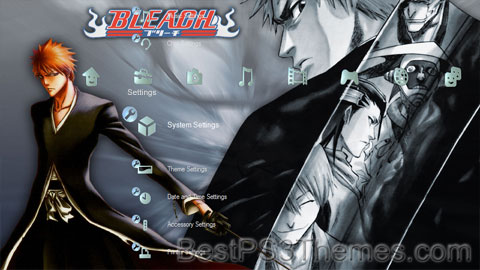
(16 backgrounds)
P3T Unpacker v0.12
Copyright (c) 2007. Anoop MenonThis program unpacks Playstation 3 Theme files (.p3t) so that you can touch-up an existing theme to your likings or use a certain wallpaper from it (as many themes have multiple). But remember, if you use content from another theme and release it, be sure to give credit!
Download for Windows: p3textractor.zip
Instructions:
Download p3textractor.zip from above. Extract the files to a folder with a program such as WinZip or WinRAR. Now there are multiple ways to extract the theme.
The first way is to simply open the p3t file with p3textractor.exe. If you don’t know how to do this, right click the p3t file and select Open With. Alternatively, open the p3t file and it will ask you to select a program to open with. Click Browse and find p3textractor.exe from where you previously extracted it to. It will open CMD and extract the theme to extracted.[filename]. After that, all you need to do for any future p3t files is open them and it will extract.
The second way is very simple. Just drag the p3t file to p3textractor.exe. It will open CMD and extract the theme to extracted.[filename].
For the third way, first put the p3t file you want to extract into the same folder as p3textractor.exe. Open CMD and browse to the folder with p3extractor.exe. Enter the following:
p3textractor filename.p3t [destination path]Replace filename with the name of the p3t file, and replace [destination path] with the name of the folder you want the files to be extracted to. A destination path is not required. By default it will extract to extracted.filename.Green Bay Packers #3
Green Bay Packers theme by Ryan Specht
Download: GreenBayPackers_3.p3t
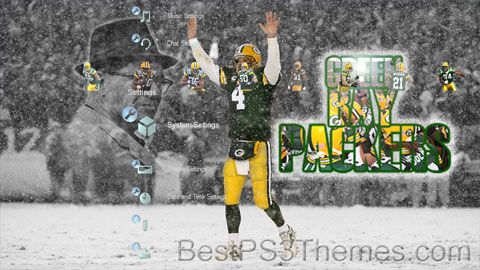
(1 background)
Green Bay Packers  Current season
Current seasonEstablished August 11, 1919[1]
First season: 1919
Play in and headquartered at Lambeau Field
Green Bay, Wisconsin
Green Bay Packers logo 
Green Bay Packers wordmark Logo Wordmark League/conference affiliations Independent (1919–1920)
National Football League (1921–present)- Western Division (1933–1949)
- National Conference (1950–1952)
- Western Conference (1953–1966)
- Central Division (1967–1969)
- National Football Conference (1970–present)
- Central Division (1970–2001)
- North Division (2002–present)
Current uniformTeam colors Dark green, gold, white[2][3]
Fight song "Go! You Packers Go!" Website packers.com Personnel Owner(s) Green Bay Packers, Inc. (537,460 stockholders – governed by a Board of Directors)[4][5] Chairman Mark Murphy CEO Mark Murphy President Mark Murphy General manager Brian Gutekunst Head coach Matt LaFleur Team history - Green Bay Packers (1919–present)
Team nicknames Championships League championships (13†[9][10])
Conference championships (9) Division championships (26) - NFL West: 1936, 1938, 1939, 1944, 1960, 1961, 1962, 1965
- NFL Central: 1966, 1967
- NFC Central: 1972, 1995, 1996, 1997
- NFC North: 2002, 2003, 2004, 2007, 2011, 2012, 2013, 2014, 2016, 2019, 2020, 2021
Playoff appearances (36) Home fields Team owner(s) - Green Bay Packers, Inc. (1923–present)
The Green Bay Packers are a professional American football team based in Green Bay, Wisconsin. Competing in the National Football League (NFL) as part of the National Football Conference (NFC) North division, the Packers are the third-oldest franchise in the NFL, established in 1919.[11][12] They are the only non-profit, community-owned major league professional sports team based in the United States.[a][13] Since 1957, home games have been played at Lambeau Field. They hold the record for the most wins in NFL history.[14][15]
The Packers are the last of the "small-town teams" that were common in the NFL during the league's early days of the 1920s and 1930s. Founded in 1919 by Earl "Curly" Lambeau and George Whitney Calhoun, the franchise traces its lineage to other semi-professional teams in Green Bay dating back to 1896. Between 1919 and 1920, the Packers competed against other semi-pro clubs from around Wisconsin and the Midwest, before joining the American Professional Football Association (APFA), the forerunner of today's NFL, in 1921. In 1933, the Packers began playing part of their home slate in Milwaukee until changes at Lambeau Field in 1995 made it more lucrative to stay in Green Bay full-time; Milwaukee is still considered a home media market for the team.[16][17][18] Although Green Bay is the smallest major league professional sports market in North America,[a][19] Forbes ranked the Packers as the world's 27th-most-valuable sports franchise in 2019, with a value of $2.63 billion.[20]
The Packers have won 13 league championships, the most in NFL history, with nine pre-Super Bowl NFL titles and four Super Bowl victories. The Packers, under coach Vince Lombardi, won the first two Super Bowls in 1966 and 1967; they were the only NFL team to defeat the American Football League (AFL) before the AFL–NFL merger. After Lombardi retired, the Super Bowl trophy was named for him, but the team struggled through the 1970s and 1980s. Since 1993, the team has enjoyed much regular-season success, making the playoffs 23 times and winning two Super Bowls in 1996 under head coach Mike Holmgren and 2010 under head coach Mike McCarthy.[21] The Packers have the most wins (826) and the second-highest win–loss record (.571) in NFL history, including both regular season and playoff games.[22][23] The Packers are longstanding adversaries of the Chicago Bears, Minnesota Vikings, and Detroit Lions, who today form the NFL's NFC North division (formerly known as the NFC Central Division). They have played more than 100 games against each of those teams, and have a winning overall record against all of them, a distinction only shared with the Kansas City Chiefs, Dallas Cowboys, and Miami Dolphins. The Bears–Packers rivalry is one of the oldest rivalries in U.S. professional sports history, dating to 1921.
Franchise history[edit]

Curly Lambeau, founder, player and first coach of the Packers Curly Lambeau years (1919–1949)[edit]
The Green Bay Packers were founded on August 11, 1919,[1] by former high-school football rivals Earl "Curly" Lambeau and George Whitney Calhoun.[24] Lambeau solicited funds for uniforms from his employer, the Indian Packing Company, a meat packing company.[25] He was given $500 ($8,800 today) for uniforms and equipment, on the condition that the team be named after its sponsor.[26] The Green Bay Packers have played in their original city longer than any other team in the NFL.
On August 27, 1921, the Packers were granted a franchise in the American Professional Football Association, a new national pro football league that had been formed the previous year. The APFA changed its name to the National Football League a year later. Financial troubles plagued the team, and the franchise was forfeited within the year before Lambeau found new financial backers and regained the franchise the next year. These backers, known as "The Hungry Five", formed the Green Bay Football Corporation.[27]
NFL champions (1929, 1930, 1931)[edit]
After a near-miss in 1927, Lambeau's squad claimed the Packers' first NFL title in 1929 with an undefeated 12–0–1 campaign, behind a stifling defense which registered eight shutouts.[28] Green Bay would repeat as league champions in 1930 and 1931, bettering teams from New York, Chicago and throughout the league, with all-time greats and future Hall of Famers Mike Michalske, Johnny (Blood) McNally, Cal Hubbard and Green Bay native Arnie Herber.[29][30] Among the many impressive accomplishments of these years was the Packers' streak of 29 consecutive home games without defeat, an NFL record which still stands.[31]
NFL champions (1936, 1939, 1944)[edit]

Don Hutson with the Packers; his jersey number was the first retired by the Packers (1951) The arrival of the end Don Hutson from Alabama in 1935 gave Lambeau and the Packers the most feared and dynamic offensive weapon in the game. Credited with inventing pass patterns, Hutson would lead the league in receptions in eight seasons and spur the Packers to NFL championships in 1936, 1939 and 1944. An Iron Man, Hutson played both ways, leading the league in interceptions as a safety in 1940. Hutson claimed 18 NFL records when he retired in 1945, many of which still stand.[32] In 1951, his number 14 was the first to be retired by the Packers, and he was inducted as a charter member of the Pro Football Hall of Fame in 1963.
After Hutson's retirement, Lambeau could not stop the Packers' slide. He purchased a large lodge near Green Bay for team members and families to live in. Rockwood Lodge was the home of the 1946–49 Packers. The 1947 and 1948 seasons produced a record of 12–10–1, and 1949 was even worse at 3–9. The lodge burned down on January 24, 1950, and insurance money paid for many of the Packers' debts.[33]

A 1950 depiction of Tony Canadeo, whose No. 3 was retired by the Packers in 1952 Curly Lambeau departed after the 1949 season. Gene Ronzani and Lisle Blackbourn could not coach the Packers back to their former magic, even as a new stadium was unveiled in 1957. The losing would descend to the disastrous 1958 campaign under coach Ray "Scooter" McLean, whose lone 1–10–1 year at the helm is the worst in Packers history.[34]
Vince Lombardi years (1959–1967)[edit]
Former New York Giants assistant Vince Lombardi was hired as Packers head coach and general manager on February 2, 1959. Few suspected the hiring represented the beginning of a remarkable, immediate turnaround. Under Lombardi, the Packers would become the team of the 1960s, winning five championships over seven years, including victories in the first two Super Bowls. During the Lombardi era, the stars of the Packers' offense included Bart Starr, Jim Taylor, Carroll Dale, Paul Hornung (as halfback and placekicker), Forrest Gregg, and Jerry Kramer. The defense included Willie Davis, Henry Jordan, Willie Wood, Ray Nitschke, Dave Robinson, and Herb Adderley.
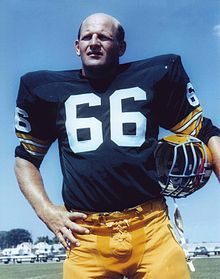
Ray Nitschke – his No. 66 jersey is one of six numbers retired by the Packers The Packers' first regular-season game under Lombardi was on September 27, 1959, a 9–6 victory over the Chicago Bears in Green Bay. After winning their first three, the Packers lost the next five before finishing strong by sweeping their final four. The 7–5 record represented the Packers' first winning season since 1947, enough to earn rookie head coach Lombardi the NFL Coach of the Year.
The next year, the Packers, led by Paul Hornung's 176 points, won the NFL West title and played in the NFL Championship against the Philadelphia Eagles at Philadelphia. In a see-saw game, the Packers trailed by only four points when All-Pro Eagle linebacker Chuck Bednarik tackled Jim Taylor just nine yards short of the goal line as time expired.
NFL champions (1961, 1962, 1965)[edit]

The "Golden Boy" Paul Hornung, featured on a 1961 sports card The Packers returned to the NFL Championship game the following season and faced the New York Giants in the first league title game to be played in Green Bay. The Packers scored 24-second-quarter points, including a championship-record 19 by Paul Hornung, on special "loan" from the Army (one touchdown, four extra points, and three field goals), powering the Packers to a 37–0 rout of the Giants, their first NFL Championship since 1944.[35] It was in 1961 that Green Bay became known as "Titletown".
The Packers stormed back in the 1962 season, jumping out to a 10–0 start on their way to a 13–1 season. This consistent level of success would lead to Lombardi's Packers becoming one of the most prominent teams of their era, and to be featured as the face of the NFL on the cover of Time on December 21, 1962, as part of the magazine's cover story on "The Sport of the '60s".[36] Shortly after Time's article, the Packers faced the Giants in a much more brutal championship game than the previous year, but the Packers prevailed on the kicking of Jerry Kramer and the determined running of Jim Taylor. The Packers defeated the Giants in New York, 16–7.
The Packers returned to the championship game in 1965 following a two-year absence when they defeated the Colts in a playoff for the Western Conference title. That game would be remembered for Don Chandler's controversial tying field goal in which the ball allegedly went wide right, but the officials signaled "good". The 13–10 overtime win earned the Packers a trip to the NFL Championship game, where Hornung and Taylor ran through the defending champion Cleveland Browns, helping the Packers win, 23–12, to earn their third NFL Championship under Lombardi and ninth overall. Goalpost uprights would be made taller the next year.
Super Bowl I champions (1966)[edit]

Packers Willie Davis (left) and Henry Jordan tackling a Chiefs player in the first AFL-NFL Championship (Super Bowl I) The 1966 season saw the Packers led to the first-ever Super Bowl by MVP quarterback Bart Starr. The team went 12–2, and as time wound down in the NFL Championship against the Dallas Cowboys, the Packers clung to a 34–27 lead. Dallas had the ball on the Packers' two-yard line, threatening to tie the ballgame. But on fourth down the Packers' Tom Brown intercepted Don Meredith's pass in the end zone to seal the win. The team crowned its season by rolling over the AFL champion Kansas City Chiefs 35–10 in Super Bowl I.
Super Bowl II champions (1967)[edit]
The 1967 season was the last for Lombardi as the Packers' head coach.[37] The NFL Championship game, a rematch of the 1966 contest against Dallas, became indelibly known as the "Ice Bowl" as a result of the brutally cold conditions at Lambeau Field.[38] Still the coldest NFL game ever played, it remains one of the most famous football games at any level in the history of the sport.[39] With 16 seconds left, Bart Starr's touchdown on a quarterback sneak brought the Packers a 21–17 victory and their still unequaled third straight NFL Championship. They then won Super Bowl II with a 33–14 victory over the Oakland Raiders. Lombardi stepped down as head coach after the game, and Phil Bengtson was named his suc
Toronto Maple Leafs
Toronto Maple Leafs theme by Raymond Regina
Download: TorontoMapleLeafs.p3t

(1 background)
Toronto Maple Leafs  2023–24 Toronto Maple Leafs season
2023–24 Toronto Maple Leafs season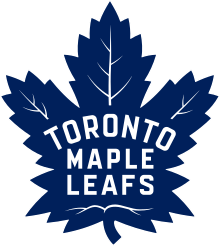
Conference Eastern Division Atlantic Founded 1917 History Toronto Arenas
1917–1919
Toronto St. Patricks
1919–1927
Toronto Maple Leafs
1927–presentHome arena Scotiabank Arena City Toronto, Ontario Team colours Blue, white[1][2]
Media Sportsnet Ontario
TSN4
Sportsnet 590 The Fan
TSN Radio 1050Owner(s) Maple Leaf Sports & Entertainment Ltd.
(Larry Tanenbaum, chairman)General manager Brad Treliving Head coach Craig Berube Captain John Tavares Minor league affiliates Toronto Marlies (AHL) Stanley Cups 13 (1917–18, 1921–22, 1931–32, 1941–42, 1944–45, 1946–47, 1947–48, 1948–49, 1950–51, 1961–62, 1962–63, 1963–64, 1966–67) Conference championships 0 Presidents' Trophy 0[note 1] Division championships 6 (1932–33, 1933–34, 1934–35, 1937–38, 1999–2000, 2020–21) Official website www .nhl .com /mapleleafs The Toronto Maple Leafs (officially the Toronto Maple Leaf Hockey Club and often referred to as the Leafs) are a professional ice hockey team based in Toronto. The Maple Leafs compete in the National Hockey League (NHL) as a member of the Atlantic Division in the Eastern Conference. The club is owned by Maple Leaf Sports & Entertainment, a company that owns several professional sports teams in the city. The Maple Leafs' broadcasting rights are split between BCE Inc. and Rogers Communications. For the first 14 seasons, the team played its home games at the Mutual Street Arena, before moving to Maple Leaf Gardens in 1931. The Maple Leafs moved to their present home, Scotiabank Arena (originally named Air Canada Centre), in February 1999.
The club was founded in 1917, operating simply as Toronto and known then as the Toronto Arenas. Under new ownership, the team was renamed the Toronto St. Patricks in 1919. In 1927, the franchise was purchased by Conn Smythe and renamed the Maple Leafs. A member of the "Original Six", the club was one of six NHL teams to have endured the period of League retrenchment during the Great Depression. The club has won 13 Stanley Cup championships, second only to the 24 championships of the Montreal Canadiens. The Maple Leafs history includes two recognized dynasties,[broken anchor] from 1947 to 1951; and from 1962 to 1967.[3][4] Winning their last championship in the 1966–67 season, the Maple Leafs' 57-season drought between championships is the longest drought in league history. The Maple Leafs have developed rivalries with five NHL franchises: the Boston Bruins, Buffalo Sabres, Detroit Red Wings, the Montreal Canadiens, and the Ottawa Senators.
The Maple Leafs have retired the use of 13 numbers in honour of 19 players, including the first in professional sports. In addition, several individuals who hold an association with the club have been inducted into the Hockey Hall of Fame. The Maple Leafs are presently affiliated with the Toronto Marlies of the American Hockey League (AHL).
Team history[edit]
Evolution of the Toronto Maple Leafs Teams Toronto Pro HC (ind., OPHL) 1906–1909 Toronto Blueshirts (NHA) 1912–1917 Toronto Arenas (NHL) 1917–1919 Toronto St. Patricks (NHL) 1919–1927 Toronto Maple Leafs (NHL) 1927–present Ice hockey portal Early years (1917–1927)[edit]
The National Hockey League was formed in 1917 in Montreal by teams formerly belonging to the National Hockey Association (NHA) that had a dispute with Eddie Livingstone, owner of the Toronto Blueshirts. The owners of the other four clubs—the Montreal Canadiens, Montreal Wanderers, Quebec Bulldogs and the Ottawa Senators—wanted to replace Livingstone, but discovered that the NHA constitution did not allow them to simply vote him out of the league.[5] Instead, they opted to create a new league, the NHL, and did not invite Livingstone to join them. They also remained voting members of the NHA, and thus had enough votes to suspend the other league's operations, effectively leaving Livingstone's league with one team.[6]
The NHL had decided that it would operate a four-team circuit, made up of the Canadiens, Montreal Maroons, Ottawa, and one more club in either Quebec City or Toronto. Toronto's inclusion in the NHL's inaugural season was formally announced on November 26, 1917, with concerns over the Bulldogs' financial stability surfacing.[7] The League granted temporary franchise rights to the Arena Company, owners of the Arena Gardens.[8] The NHL granted the Arena responsibility of the Toronto franchise for only the inaugural season, with specific instructions to resolve the dispute with Livingstone or transfer ownership of the Toronto franchise back to the League at the end of the season.[9]

Team photo of the Arenas from the 1917–18 season. The club won its first Stanley Cup in their inaugural season. The franchise did not have an official name but was informally called "the Blueshirts" or "the Torontos" by the fans and press.[10] Although the inaugural roster was made up of players leased from the NHA's Toronto Blueshirts, including Harry Cameron and Reg Noble, the Maple Leafs do not claim the Blueshirts' history as their own.[11] During the inaugural season, the club performed the first trade in NHL history, sending Sammy Hebert to the Senators, in return for cash.[12] Under manager Charlie Querrie, and head coach Dick Carroll, the team won the Stanley Cup in the inaugural 1917–18 season.[13]
For the next season, rather than return the Blueshirts' players to Livingstone as originally promised, on October 19, 1918, the Arena Company formed the Toronto Arena Hockey Club, which was readily granted full membership in the NHL.[14] The Arena Company also decided that year that only NHL teams were allowed to play at the Arena Gardens—a move which effectively killed the NHA.[15] Livingstone sued to get his players back. Mounting legal bills from the dispute forced the Arenas to sell some of their stars, resulting in a horrendous five-win season in 1918–19. With the company facing increasing financial difficulties, and the Arenas officially eliminated from the playoffs, the NHL agreed to let the team forfeit their last two games.[12][16] Operations halted on February 20, 1919, with the NHL ending its season and starting the playoffs. The Arenas' .278 winning percentage that season remains the worst in franchise history. However, the 1919 Stanley Cup Finals ended without a winner due to the worldwide flu epidemic.[12]

Team photo of the club during the 1921–22 season. Then known as the St. Patricks, the club won its second Stanley Cup in 1922. The legal dispute forced the Arena Company into bankruptcy, and it was forced to sell the team. On December 9, 1919, Querrie brokered the team's purchase by the owners of the St. Patricks Hockey Club (Percy and Fred Hambly),[17] allowing him to maintain an ownership stake in the team.[18] The new owners renamed the team the Toronto St. Patricks (or St. Pats for short), which they used until 1927.[19] Changing the colours of the team from blue to green, the club won their second Stanley Cup championship in 1922.[16] Babe Dye scored four times in the 5–1 Stanley Cup-clinching victory against the Vancouver Millionaires.[20]
In 1924, the team's ownership changed again, as movie theatre impresario Nathan Nathanson and mining magnate Jack Bickell purchased the shares of the Hamblys.[17] Bickell invested CA$25,000 in the St. Pats as a favour to his friend Querrie, who needed to financially reorganize his hockey team.[21]
Conn Smythe era (1927–1961)[edit]
After several financially difficult seasons, the St. Patricks' ownership group (Querrie and Nathan Nathanson)[22] seriously considered selling the team to C. C. Pyle for CA$200,000 (equivalent to $3,452,747 in 2023). Pyle sought to move the team to Philadelphia.[16][23] However, Toronto Varsity Blues coach Conn Smythe put together a group of his own and made a $160,000 CA$160,000 (equivalent to $2,762,198 in 2023)) offer. With the support of minority shareholder Bickell, Smythe persuaded Querrie and Nathanson to accept their bid, arguing that civic pride was more important than money.[23] Bickell would become team president.[24]
Smythe took control on February 14, 1927; installing himself as governor and general manager. He immediately renamed the team the Maple Leafs, after the national symbol of Canada.[25] He attributed his choice of a maple leaf for the logo to his experiences as a Canadian Army officer and prisoner of war during World War I. Viewing the maple leaf as a "badge of courage", and a reminder of home, Smythe decided to give the same name to his hockey team, in honour of the many Canadian soldiers who wore it.[16][26][27] However, the team was not the first to use the name. A Toronto minor-league baseball team had used the name "Toronto Maple Leafs" since 1895.[28] Although Smythe would not acquire controlling interest in the team until 1947, he would be the franchise's dominant voice for the next four decades.[29][30][31]
Initial reports were that the team's colours were to be red and white,[32] but the Leafs wore white sweaters with a green maple leaf for their first game on February 17, 1927.[33] On September 27, 1927, it was announced that the Leafs had changed their colour scheme to blue and white.[34] Although Smythe later stated he chose blue because it represents the Canadian skies and white to represent snow, these colours were also used on the trucks for his gravel and sand business.[34] The colour blue was also a colour historically associated with the City of Toronto. The use of blue by top-level Toronto-based sports clubs began with the Argonaut Rowing Club in the 19th century, later adopted by their football team, the Toronto Argonauts, in 1873.[35]
Opening of Maple Leaf Gardens (1930s)[edit]
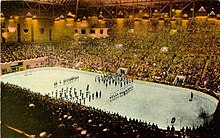
Opening ceremony for the first game at Maple Leaf Gardens on November 11, 1931 By 1930, Smythe saw the need to construct a new arena, viewing the Arena Gardens as a facility lacking modern amenities and seating.[36] Finding an adequate number of financiers, he purchased land from the Eaton family, and construction of the arena was completed in five months.[37][38]
The Maple Leafs debuted at their new arena, Maple Leaf Gardens, with a 2–1 loss to the Chicago Black Hawks on November 12, 1931.[38] The opening ceremonies for Maple Leaf Gardens included a performance from the 48th Highlanders of Canada Pipe and Drums.[39] The military band has continued to perform in every subsequent season home opening game, as well as other ceremonies conducted by the hockey club.[40][41] The debut also featured Foster Hewitt in his newly constructed press box above the ice surface, where he began his famous Hockey Night in Canada radio broadcasts that eventually came to be a Saturday-night tradition.[38] The press box was often called "the gondola", a name that emerged during the Gardens' inaugural season when a General Motors advertising executive remarked how it resembled the gondola of an airship.[42]
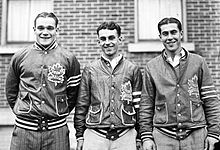
The Kid Line consisted of Charlie Conacher, Joe Primeau, and Busher Jackson (left to right). They led the Leafs to win the 1932 Stanley Cup, as well as four more Stanley Cup finals appearances over the next six years. By the 1931–32 NHL season, the Maple Leafs were led by the "Kid Line" consisting of Busher Jackson, Joe Primeau and Charlie Conacher and coached by Dick Irvin. The team captured their third Stanley Cup that season, vanquishing the Chicago Black Hawks in the first round, the Montreal Maroons in the semifinals, and the New York Rangers in the finals.[43] Smythe took particular pleasure in defeating the Rangers that year. He had been tapped as the Rangers' first general manager and coach for their inaugural season (1926–27) but had been fired in a dispute with Madison Square Garden management before the season had begun.[44]
Maple Leafs star forward Ace Bailey was nearly killed in 1933 when Boston Bruins defenceman Eddie Shore checked him from behind at full speed into the boards.[45] Leafs defenceman Red Horner knocked Shore out with a punch, but Bailey, writhing on the ice, had his career ended.[38] The Leafs held the Ace Bailey Benefit Game, the NHL's first All-Star Game, to collect medical funds to help Bailey. His jersey was retired later the same night.[46] The Leafs reached the finals five times in the next seven years but bowed out to the now-disbanded Maroons in 1935, the Detroit Red Wings in 1936, Chicago in 1938, Boston in 1939 and the Rangers in 1940.[38] After the end of the 1939–40 season, Smythe allowed Irvin to leave the team as head coach, replacing him with former Leafs captain Hap Day.[38]
The first dynasty (1940s)[edit]
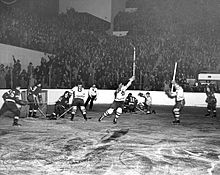
The Maple Leafs score against Detroit during the 1942 Cup Finals. The Leafs went on to win the series, performing the only reverse-sweep in the Finals. In the 1942 Stanley Cup Finals, the Maple Leafs were down three games to none in the best-of-seven series against Detroit. Fourth-line forward Don Metz then galvanized the team, to score a hat-trick in game four and the game-winner in game five.[47] Goalie Turk Broda shut out the Wings in game six, and Sweeney Schriner scored two goals in the third period to win the seventh game 3–1, completing the reverse-sweep.[48] The Leafs remain the only team to have successfully performed a reverse-sweep in the Stanley Cup finals.[49] Captain Syl Apps won the Lady Byng Memorial Trophy that season, not taking one penalty, and finished his ten-season career with an average of 5 minutes, 36 seconds in penalties a season.[50]
Smythe, who reenlisted in the Canadian Army at the outbreak of World War II, was given leave from military duty to view the final game of the 1942 finals. He arrived at the game in full military regalia.[48] Earlier, at the outbreak of war, Smythe arranged for many of his Maple Leafs players and staff to take army training with the Toronto Scottish Regiment. Most notably, the Leafs announced a large portion of their roster had enlisted, including Apps, and Broda,[51] who did not play on the team for several seasons due to their obligations with the Canadian Forces.[52] During this period, the Leafs turned to lesser-known players such as rookie goaltender Frank McCool and defenceman Babe Pratt.[52][53]
The Maple Leafs beat the Red Wings in the 1945 Finals. They won the first three games, with goaltender McCool recording consecutive shutouts. However, in a reversal of the 1942 finals, the Red Wings won the next three games.[52] The Leafs were able to win the series, winning the seventh game by the score of 2–1 to prevent a complete reversal of the series played three years ago.[52]
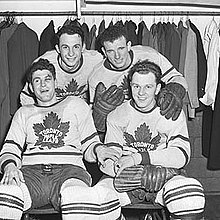
Maple Leafs players during the 1946–47 season. The team would win its sixth Stanley Cup that season. After the end of the war, players who had enlisted were beginning to return to their teams.[52] With Apps and Broda regaining their form, the Maple Leafs beat the first-place Canadiens in the
Posts pagination



